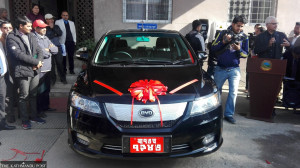Money
NAC to purchase 4 Viking Twin Otters
National flag carrier, Nepal Airlines Corporation (NAC), has started laying the groundwork to buy at least four Twin Otter aircraft in a bid to serve remote areas of the country.
National flag carrier, Nepal Airlines Corporation (NAC), has started laying the groundwork to buy at least four Twin Otter aircraft in a bid to serve remote areas of the country.
The state-owned corporation said that the management is studying the viability of adding the de Havilland Canada DHC-6 Twin Otter, currently marketed as the Viking Air DHC-6 Twin Otter, to its fleet.
The de Havilland Canada DHC-6 Twin Otter is a 19-seater Canadian short takeoff and landing (STOL) utility aircraft manufactured by Viking Air.
“We are planning to procure at least four new Viking DHC6-400 Twin Otter aircraft. After necessary analysis by the management, the proposal will be tabled at the board for approval,” said NAC Managing Director Sugat Ratna Kansakar.
The NAC’s move comes at a time when demand for air transport service has gone up sharply in remote areas.
Kansakar said it was a social obligation for state-owned enterprise to fly to remote areas, although the potential of service expansion in rural areas is yet to be fully tapped by private companies.
“Once we procure the aircraft, we will expand our network to all the airports in the country,” Kansakar said. Out of 54 airports in Nepal, 29 are currently in operation.
“We have enough manpower, like engineers and pilots, to fly DHC-6 Twin Otter,” Kansakar said.
NAC had recently added four China-made aircraft—two 17-seater Y12e and two 58-seater MA60—to its fleet. It has initiated the process of bringing in two remaining Chinese aircraft of the six that were ordered.
Following the arrival of another two Y12e aircraft, the national flag carrier’s domestic fleet will contain nine planes, including three vintage Twin Otters. However, it has not been able to use Y12e aircraft in remote airfields due to regulatory limits.
As per the Chinese aircraft’s specifications, it can fly to airports with a maximum grade of up to 2 percent or about 1.2 degrees of slope.
The US Federal Aviation Administration (FAA) allows aircraft to operate on runways with slopes of maximum grade of up to 1.2 degrees, but the runway of Tenzing-Hillary Airport at Lukla, for instance, has 11-degree slope. Most of the STOL airfields in Nepal, including Lukla in Khumbu, have a slope of over 1.2 degrees.
The aircraft manufacturer needs to obtain gradient certificate to operate on runways with slopes exceeding 1.2 degrees. But Y12e aircraft has not obtained one from the FAA. As a result, Y12e aircraft that was originally brought to serve airfields in the mountains has been flying to destinations like Pokhara and Simara.
During its heyday, NAC used to operate 18 aircraft—12 Twin Otters, three Avros and three Pilatus Porters-on domestic routes.
Between 1972 and 1979, the Canadian International Development Agency donated seven Twin Otters to NAC. The Canada-made Twin Otter, a 19-seater aircraft with STOL capability, was the most suitable aircraft for serving Nepal’s remote and mountainous regions; but there are very few reconditioned planes for sale in the international market.
The Twin Otter made its first appearance in Nepal in 1970 as a replacement for the DC-3 Dakota, the workhorse of the then Royal Nepal Airlines Corporation.




 29.24°C Kathmandu
29.24°C Kathmandu














